 People illustrations credit: Shutterstock.com
People illustrations credit: Shutterstock.com
A run-down of the leadership challenges and the exciting developments made by ARVO – from Stephen Pflugfelder, Maureen McCall, Irene Gottlob, and Justine Smith.
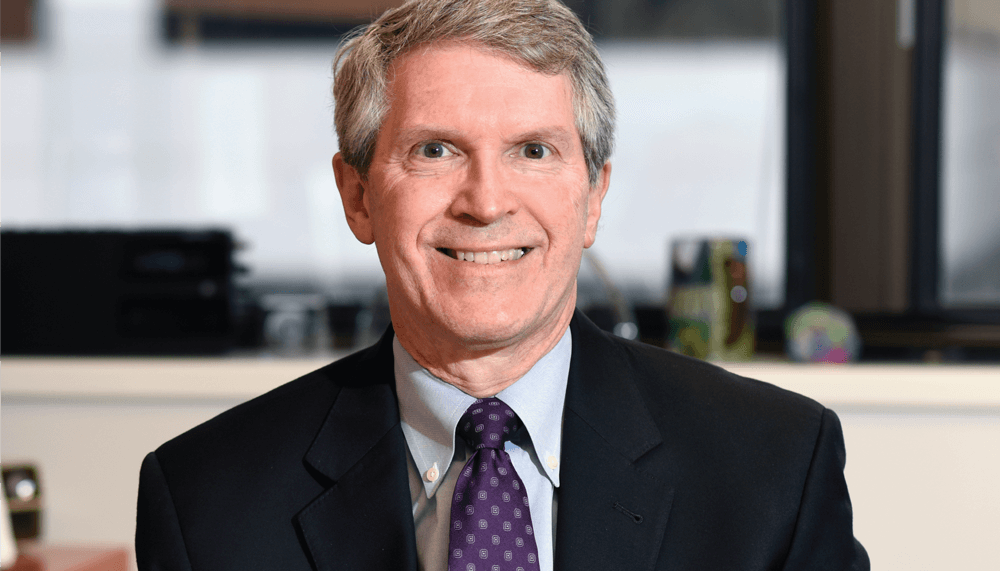
Stephen Pflugfelder
I’m a clinician scientist and a cornea specialist – so I obviously specialize in the front part of the eye, but I’ve also run a fundamental research lab for about three decades or more, which has allowed me to investigate my keen interest in diseases of the cornea and the ocular surface, primarily dry eye. That’s where most of my research has been focused.
Moving onto my ARVO role, I was the association’s president and I’ve been involved in ARVO for around four decades now. During the time that I’ve been involved with the organization, I was elected to be the trustee for the cornea section, which is a five-year term, and the ARVO president is selected from the pool of trustees – from which I was elected to serve as president for the one-year term. This term ended last May, so currently I’m the immediate past president and I oversee the Board of Trustees activities. I would help organize and run the meetings, and I would be probably the principal liaison with the ARVO administration, which is based near Bethesda, Maryland, USA.
ARVO in my career
ARVO has had a huge role in my career. I got involved in ARVO when I was still in training, and had that early opportunity to realize the value of the meeting, not only as an educational experience, but as a forum for communication and exchange. I’ve always tried to present in the meeting every year, to participate in symposia, and be on committees – really taking in the full benefits of these meetings and the new and old experiences that come with them. The real benefit to me and my career was that people got to know who I was, which is important, alongside being asked to participate in studies and gaining recognition for my work. Of course, this also helps with getting published and getting grant support. As I move forward in my career and become a little more senior, I appreciate the opportunity to help the next generation of scientists, to mentor them and provide advice.
If people in the field really want to get involved in research, whether that’s clinical based research or fundamental research, then it’s essential for them to be a member and an active participant in ARVO.
Career highlights
I was very fortunate in that I had a serendipitous discovery in the late 1980s. My research group and I found that there was an inflammatory component to dry eye and that the dryness and desiccation of the surface of the eye was a potent inflammatory stress. From there it spawned a whole new direction in dry eye treatment, with very successful anti-inflammatory drugs that are used to treat it. We also have a clinical test to measure inflammatory mediators and dry, so that was my proudest moment in my career.
Going back to my first ever project – initially, I was looking at people with autoimmune disease, but then I then I realized that a lot of patients with autoimmune conditions develop pretty bad dry eye. That’s what made me look in a broader sense to see if patients that don’t have autoimmune diseases also had dry eye, and it turns out that they either did, or they also had inflammation.
I think that one of my biggest challenges, and one that most researchers face, is getting funding for our research. Because the funding is crucial to maintain a vibrant group, but then there’s a lot of responsibility on us to secure this funding and maintain jobs for the group you’ve built. I’ve been fortunate that I have been able to maintain funding, but I know that’s something that affects a lot of researchers, and in some cases causes them to leave the field.
The other path
If I wasn’t an ophthalmologist, I probably would still be involved in some scientific discovery, although maybe in a different discipline. But I like those challenges, and I think I would still be doing research. If I had to choose a specific area, it would probably still be in the realm of inflammation. I’m really intrigued by inflammation and the role that it plays in virtually every disease. What are the things that we can do to try to bolster our own immunity and suppress damaging inflammation? I think COVID-19 has taught us a lot about that. I also play the guitar, but I don’t foresee me giving up the day job for it!
Challenging times
As you might expect, a lot of challenges over the past couple of years have been pandemic-related. I was president elect during the first year of the pandemic, so I was involved in planning that year’s ARVO meeting – in the end we had a very small meeting with almost no content compared with normal years. People could submit abstracts, but there were no sessions. I was then involved in planning the first virtual meeting in 2021, which was a learning experience for the organization, for the Board of Trustees, and for me. I was in charge of the opening and closing sessions and picking major keynote speakers. Change in format meant that everything had to be recorded ahead of time. We had to learn quite a bit about virtual communication platforms, and ARVO did most of that work, but we provided the necessary guidance and feedback about how to do that and give a great meeting despite the circumstances.
The pandemic has really let the genie out of the bottle for hybrid meetings and virtual formats for these events. Now that we are proficient in virtual delivery of the meetings we can expand our reach – particularly in an international organization like ARVO, we could pretty much cover the globe. It also brings new opportunities, whereas before our meetings have always favored the North American attendees, with Vancouver, Canada, being the first non-USA venue. We can now have more attendees and they don’t have to deal with jetlag! As technology continues to improve, this format where we can include as many people as possible will probably only continue to grow – of course we would all like to get back to regular in person meetings as well!
Leading ARVO: adaptation and advice
Over the years, ARVO has developed a very well-defined board and governing structure, and it has an outstanding full time administrative staff, and an executive director. So really, there weren’t that many changes in terms of the leadership or the governing of ARVO over that period, or during the whole period of my presidency.
ARVO is a somewhat unique organization, in that it’s international, and it also includes clinicians, some of whom are pure clinicians that don’t do much research, as well as very technical bench researchers – and, of course, everything in between. You have to mesh that together in a meeting, which can sometimes create challenges. ARVO has to work to develop policies and programs that can satisfy this diverse membership, and it is probably the most diverse organization that I have been a member of. Obviously, we have to be open to the needs of all of the constituents, and we try to take their suggestions seriously, and harmonize the meeting.
Ultimately, this collaboration between clinicians and researchers, and the people who wear both hats, is the reason that ophthalmic therapies get to help the patients. I think both sides really enjoy that interplay, too – bench researchers are looking for the relevance of their work, and, for the most part, translation to the clinical arena. This also helps them with funding agencies, patient support groups, etc. If they’re going to fund things, they want to see how it’s going to translate. The fundamental researchers have an opportunity to attend the clinical sessions, and to get the perspective right from the clinical side as to what the real needs are.
Moving past the pandemic
At the beginning of the pandemic, as clinicians, we were very worried, because in ophthalmology we’re literally a meter away from the patient. We had to be very cautious and develop barriers to avoid transmission as much as possible – and I think that we did a very good job. In fact, I don’t know any ophthalmologists in the UK, or the US who developed COVID-19 from the clinic, as far as they can tell. We also tried to be respectful of people’s rights and wants – people have different levels of tolerance for all the rules and regulations. We try to do the best job we can, while also trying to promote public health, and being responsible for yourself and others. I think overall, we have done a good job.
We’re fortunate to live in a time where we have the technology to communicate and exchange ideas internationally, through meetings like this. Only 10 years ago that might not have been as easy, so it’s fortunately happened at a time in history where we can do that – I think that’s a silver lining. And I think our experiences and new-found virtual meeting skills are things we will use more in the future.
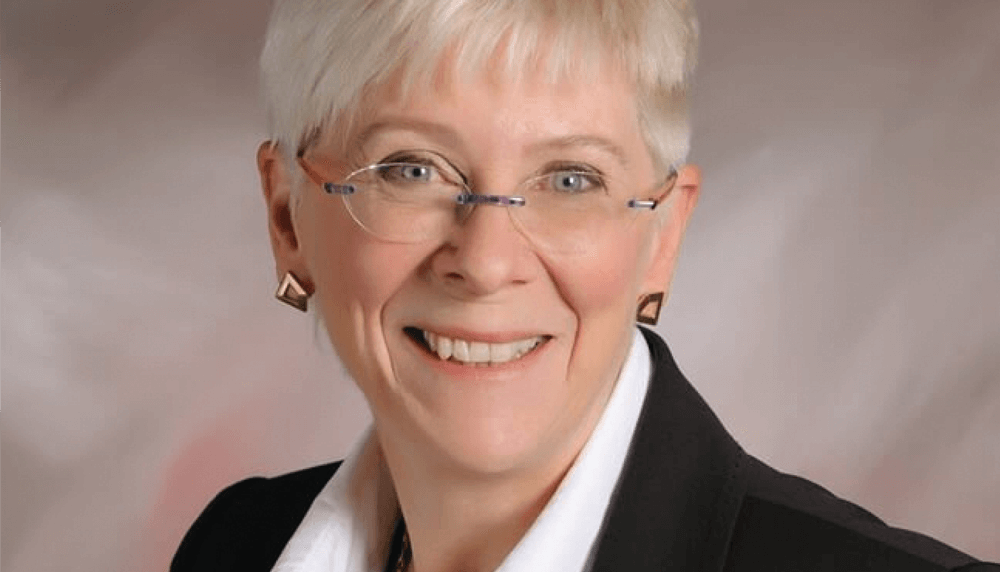
Maureen McCall
I’m a professor in the Department of Ophthalmology and Visual Sciences here at the University of Louisville, USA. I have a joint appointment in a basic science department called Anatomical Sciences and Neurobiology, and Psychological and Brain Sciences. The reason for this is that the basic science department has a very strong sensory science focus, and together as a team we actually cover from the front of the eye to the back of the brain. I am also the Vice Chair for research in the Department of Ophthalmology and I’ve held that position for about a year and a half. For that role I help guide the current research in the department to continue to maintain our successful research contribution, to increase the size of our faculty in the next couple of years, and to guide the younger faculty members towards funding and success. Finally, I’ve been the Kentucky Lions Eye Center research Endowed Chair for several years. The charge for that is to move research forward in retinal function and dysfunction – so in normal and in diseased retinas.
Lab life
Primarily, my day job is to run a research lab – currently consisting of four postdocs, two graduate students, and two technicians. My role is to interface with everybody to make sure that we are all moving in sync to whatever the overall goal of the projects is. I try to help them move forward by understanding how the workflow is going and how to enhance it, so that everybody’s job is rewarding, everybody is intellectually involved, and we can all push our research forward. We’re interested in how inhibitory mechanisms shape the visual responses of retinal ganglion cells, in particular glycinergic inhibition, which is a frontier that has not really been deeply explored, so we are bringing molecular tools and knocking out individual glycine receptors or knocking them down using an shRNA approach. We want to figure out what glycine is doing at the level of the ganglion cell response. The other half of the lab is focused on translational work for retinal diseases – mainly autosomal dominant retinitis pigmentosa (ADRP). We use both pig and mouse models to study the disease, and we are interested in evaluating genome editing techniques to determine how efficacious they are in terms of restoring or arresting rod function in an ADRP pig model.
ARVO challenges and growth
COVID-19 has been the challenge of recent times. When I first started on the board, we had meetings in person, with discussions around a large round table, you got to know people a lot better, and you formed friendships that last for forever – that’s what I miss. The challenge that we face as we’ve added new trustees is that I don’t feel like I’ve had the opportunity to get to know them as well as I could have. That doesn’t take away from our basic focus, trying to make sure that ARVO moves forward in the best way possible, but I do miss that human contact with these people. The fact is that the conversations that occur in ARVO meetings outside of the formal setting, in the informal breaks or the meals, are tremendous and can lead to collaborations and new ideas.
You always want to represent your constituency, and visual neuroscience is a smaller part of ARVO than many of the others – such as, for example, glaucoma. Whenever I’m talking about issues that have to do with programming, I’m mainly trying to make sure that we continue to be represented, because our basic science is important and it’s also an important part of being able to move towards translation. I feel like that’s my responsibility as a trustee.
I’m also the liaison to the members in training, so I’m always looking out for what ARVO is doing and how it will impact our young members. Our young members will become our old members; therefore we need to continue to recruit new people and make them feel welcome, otherwise ARVO loses vitality. That’s been a big goal for me: to make sure that they are well represented, and that they get their moment in the spotlight.
Steering in the right direction
ARVO is an organization that is constantly striving to provide more for its members, and has been very forward thinking in terms of diversity, and trying to address issues of diversity. This is from well before the tide of the pandemic swept over us, and it is still continuing now. There’s a Women’s Leadership Development Program, and a Women in Eye and Vision Research (WEAVR) program that make sure that women are represented. Then there’s a global member mentorship program, so people in developing countries can be mentored by more established scientists. There are science communication training fellowships available, and there’s a new high school vision program. On top of these initiatives, ARVO has also been trying to create a lot of online learning programs, to ensure that people who might not have access to a particular topic can still get intensive online training – and this is a resource that’s being developed by ARVO using its own members. ARVO even trains professionals on how to represent diversity in the right way – being careful not to step on anybody’s toes, but at the same time help recognize that we need to be a diverse society, because the best ideas come from when we cross pollinate. There’s been a lot of discussion about how to represent and determine the diversity of our membership, because even that is an issue in itself and we had not tracked it before. We are starting to do it in a very sensitive way. All of these things are huge milestones that the society has taken on and are in various stages of accomplishment.
A great thing about being a part of ARVO is that even though the organization has grown, it’s still a size that is manageable in terms of collaborative work. I’m not saying that the trustees don’t have differing opinions, and that we don’t have active discussions about topics, but it’s always in a really great collaborative setting where we try to come to a consensus.
Advice for future leaders
If I could give advice to someone who is going to lead an organization like ARVO, a key part would be to listen carefully at the beginning. I was pretty naive about how these societies worked and I think that I learned a lot by listening, and listening to the way that the conversation was framed, how the discussion was allowed to move forward with some gentle nudging, if something was getting off track, and generally learning the process. It then moves on to volunteering and moving the process forward, making sure that the members in training are represented, and ensuring that when issues arise I speak up in a positive and constructive way to make sure that an initiative includes our younger members. Not all trustees are the same; they have different interests and priorities – if you have something you are passionate about, you can make a huge impact. I didn’t know how to do that, but it’s a learning curve and you just have to get stuck in and learn as you go.
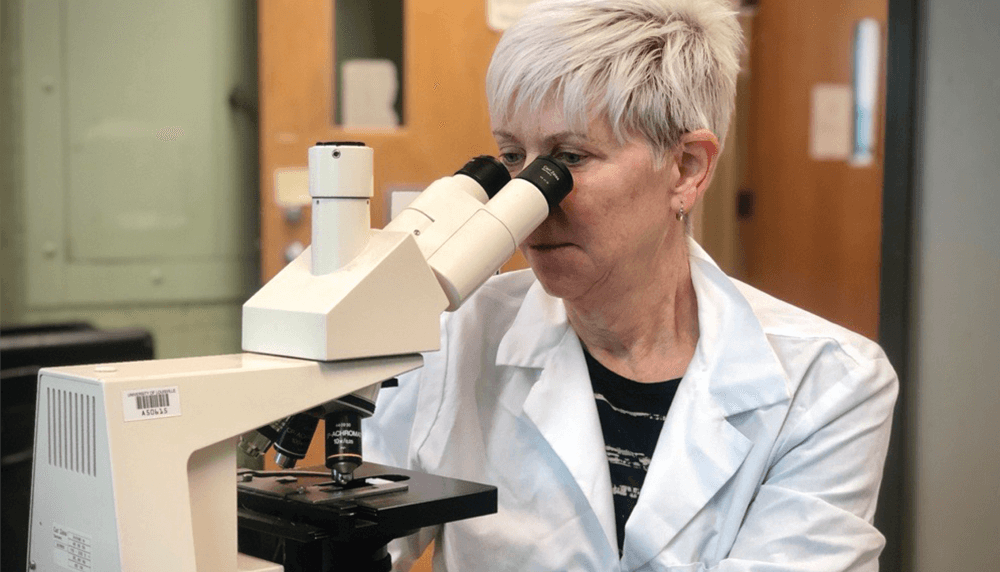
Overcoming the pandemic
I don’t want to sound like a broken record when it comes to how well ARVO dealt with the challenges of the pandemic, but it was really amazing to see how the staff and leadership pivoted to address the issues as they occurred – and reoccurred. I attended several meetings from different societies at the very beginning of the pandemic, and they were not anywhere close to as well planned and executed as ARVO. There was very little time to prepare for the first online meeting, yet in most respects it was seamless. There weren’t dropped streaming lines and, or any of that kind of thing – whereas we probably have all experienced that happening with a lot of other meetings that had gone online at that time. So I can’t say enough about the staff and the way that the association carefully screened vendors and talked to the trustees about what we thought we needed. Now, as we transition to what we hope is a hybrid meeting, ARVO has also taken into account discussions with the trustees to make sure that the online experience continues to be a rich one.
Virtual meetings have really opened ARVO up to people who might not have the financial ability to travel. People may have other responsibilities in their home country or city, which prohibits them from coming to the meeting that year. Now, you get to reach potentially a much broader audience and more people than ever can benefit from the experience. ARVO has really thought it through as well –it has learned from the pandemic, and it’s going to continue to use this as a tool to make the meeting more accessible.
Screen time
Switching to online meetings has changed how we communicate. Luckily, we get to keep face-to-face communication, which is now screen-to-screen, of course – so you still get all of those important cues that you lose when you’re just on the phone with somebody. Even when one of my lab members has to stay home and we need to have a meeting, we can still move forward with it.
It’s the same with collaborators – you can talk to them more frequently now that we’ve embraced the technology rather than trying to arrange meetings in person. With those smaller meetings, it avoids the issues of the online Board of Trustees meetings, where you have so many people that all you see are little squares. Yes, you can see when someone is talking, but it’s so much more different to see what’s going on compared to being in the room.
Of course, all of us are really excited about the idea that we might actually be together again, at the May 2022 ARVO meeting. I keep looking at the New York Times to see how we’re doing in Kentucky, and in the US, in terms of COVID-19 and whenever I see the curve starting to flatten out, I get really excited about the event happening.
ARVO in your career
I certainly enjoy the translational side of the research. It’s so rewarding, because you know that if it’s a successful or efficacious therapy, then there is some likelihood that it will be applied to the clinic. I got involved with ARVO when I was a graduate student, and I was not doing translational work. Translational work wasn’t even a term that anybody talked about! I was at the University of Maryland in what’s called a visual psychophysics lab, where we tested humans and asked questions about what they could and could not perceive. While getting my Master’s degree from there, I became very interested in the electrophysiology side of neuroscience, and I did a PhD in neurobiology at the State University of New York and Albany. This is where I got to look at issues of plasticity and envision responses in the visual cortex, and kicked off my involvement with ARVO. Although I’ve had a few lapses, where a lab that I was in was more interested in the neuroscience part of things, I’ve always come back to ARVO as a home.
I belong to the section of ARVO that’s called Visual Neuroscience. It’s always about neuroscience, but the section is broad. It contains mostly basic science of retina structure and function. There are also a lot of people like me branching out and using our skills in assessing what’s happening at the level of the retina and the output of the retina to translational medicine, so that better predictions can be made when a therapy seems to work at the gross level. ARVO is just basically a very solid home for people who do visual neuroscience, and I’ve evolved along with my colleagues so that the visual neuroscience is not just basic science, but also translational science and it reaches out to other parts of the of the ARVO family, for collaborations and things like that.
Career highlights
We’ve been working with a couple of biotech companies and trying to assess the efficacy of some genome editing, and we have a level of success with each of those therapies. It has been very satisfying to make and evaluate a therapy and its efficacy and see it move forward towards some kind of clinical use. Every one of those therapies has a component that rescues rod photoreceptor function and broad structure. I still get a thrill when we get those first results that show that the rods are starting to function again. It doesn’t matter what the technology is, it’s still thrilling that something really good is happening in the retina.
Running the lab is a challenge, but very rewarding. Going to graduate school doesn’t set you up for HR – yet when you keep progressing in science, you become someone’s boss! Managing expectations and different personalities is a big part of it. Everybody who comes in has a really good hope that things are going to work out beautifully for them – of course, they often won’t. Everybody needs a different level and a different style of mentoring, and the challenge is how to work with people to move them towards their greatest potential. Sometimes it takes learning when that’s not working, and making the decision that this role is not for them, and that they would be more fulfilled in a different role. As Einstein said, “Insanity is doing the same thing over and over again, and expecting a different result.”
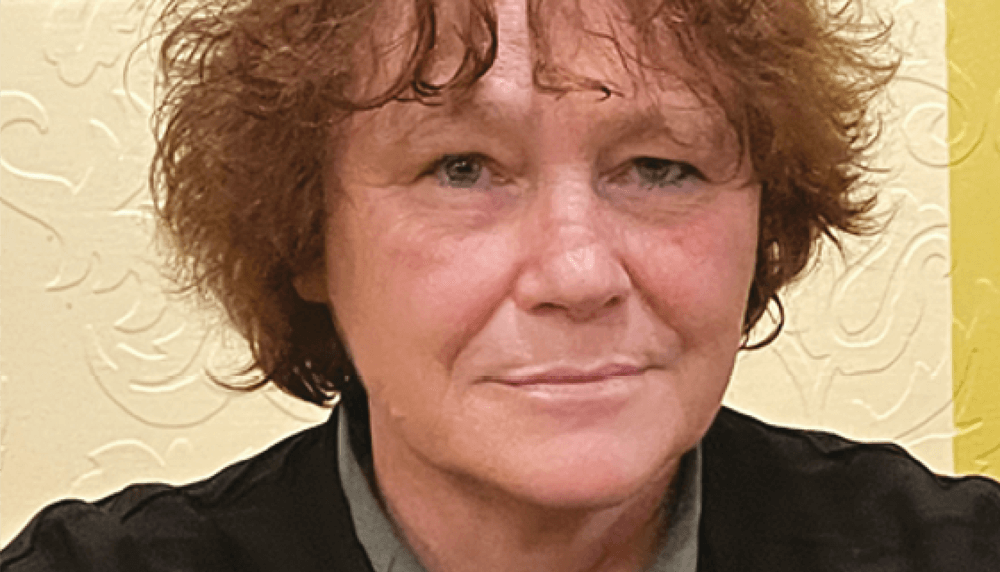
Irene Gottlob
Up until very recently I have worked at the University of Leicester in the UK, but I have just recently moved to the USA, and I started my work at Cooper University Hospital in New Jersey only a few months ago. At the University of Leicester, I was Chair of Ophthalmology for more than 20 years, with my work being split 50:50 between clinical work and academic work. Clinically, my subspecialty fields are neuro-ophthalmology and pediatric ophthalmology, whereas my academic work consisted mainly of research and postgraduate teaching. My research group included PhD and Master students focusing on nystagmus, ocular motility, neuro-ophthalmological diseases, and pediatric eye diseases. The focus of my pediatric research is amblyopia and OCT in young children.
There have been so many challenges over the last couple of years – believe it or not, not all of them have been pandemic-related! For me – although ARVO is an international organization – being one of few non-US members was a little difficult at the beginning. This was mainly due to the US members being more familiar with the structures, the financial aspects, and also with each other. But this was a learning curve that was quickly overcome – and this was the same case when getting familiar with everyone involved.
ARVO leadership challenges
Of course, the most significant change was definitively introduced by the pandemic. We saw a big shift in research focus, especially with the advent of artificial intelligence that is now a major research theme. There has also been an increase in multidisciplinary meetings and groups that will ultimately improve the scope and translation of research.
One of the major things I’ve learned from being involved in ARVO – such a large research-oriented organization – is that it is very important to be flexible and to adapt to any changes in the research emphasis, and to support interdisciplinary sessions. More generic advice for leading any organization is to listen to all the different members and to be very inclusive. ARVO is already working very intensely on diversity and inclusion, with emphasis on equal opportunities, and by having specific meetings for young investigators. For new ARVO members, the main meetings can be quite intimidating, and I think it is crucial that we continuously address this so that we don’t lose talented ophthalmologists and researchers.
Obviously, the activities in our pandemic landscape have all been virtual – hopefully this will be changing very soon. But this has naturally taken away the more informal interactions that go hand in hand with conferences and meetings. Casual meetings have been very important for problem solving or ideas, for example for new symposia. Fortunately for all of our members, the ARVO management has adapted exceptionally well with the challenges, and coordinated extremely well-organized meetings for the leaders and for the entire ARVO meeting – a shining example of how organizations can deal with the challenges of the last couple of years.
Professional pandemic challenges
COVID-19 has significantly changed my professional life. At the beginning of the pandemic patients could only be contacted via telephone appointments, and later only few patients were allowed per session in the UK National Health Service as social distancing was required in waiting areas. A large backlog of patients and routine surgeries built up – which wasn’t good for the patients or for me. On the research side, my ongoing studies were put on hold and patients had to discontinue participation. The pandemic had a large detrimental influence on my research students, as they were mostly involved in clinical studies. But we had to find alternatives and adapt as best we could. Travel has been a big change too. Before the pandemic I travelled to many meetings every year, which has been significantly reduced now. I am optimistic and believe that the virus will get less pathogenic, more like the flu. Things will get better, and work and meetings will return to being much closer to what was normal two years ago. In the long term, I think people will work more from home and communicate electronically more and more – more flexibility and a hybrid approach to work seems to be one of the major takeaways from the pandemic.
ARVO and your career
ARVO has had a very important role in my career. When I attended ARVO for the first time, as a first-year resident, the meeting was an eye opener – just the access it gave me to all the ongoing research. It was fantastic to be able to directly speak to the authors whose papers I had read, and poster sessions were a fantastic opportunity for meeting people in person. Over the years, ARVO meetings gave me the opportunity for important collaborations and to make many lifelong friends all over the world. After each ARVO meeting I come home with new research ideas – another major advantage of the diversity in research and translational studies that are presented at the meeting.
If I could offer any advice to people who have only just joined, or are thinking of joining ARVO, is to interact with more established researchers and not to be shy to ask for advice, for collaboration or even asking to join their group.
Career highlights
The thing I’m most proud of in my career, from a personal level, is the interdisciplinary group I established in Leicester, where we involved many amazing students in research in a very collaborative atmosphere. On a research level, I think it is the detection of the FRMD7 gene for idiopathic nystagmus, and the research on hand-held OCT in young children.
One of the biggest challenges I’ve felt over my career has been to be taken seriously both as a woman and often as a newcomer, as I worked in five different countries with different medical systems. To start over without having many connections was often a challenge. However, this was also an opportunity as it always opened new horizons, helped me learn new things, meet many people, and make friends.
Advice and inspiration
It’s important to enjoy what you are doing, especially if you are working long hours. Being very good in your field is an important factor to take pleasure in your work. I would advise to take all the time for your clinical and research training you need to become top in your field and to aim to work in top groups and teaching institutions.
My early career was inspired by Robert Reinecke during my fellowship at Wills Eye Hospital in Philadelphia, Pennsylvania, US. He was highly competent and I admired him for never giving up. Today, I am inspired by my students and residents.
The other path
If I was not an ophthalmologist, I would probably be an architect or a designer. Within medicine, I think any specialty is interesting if it is done well. I prefer working in depth in a smaller area than to be more of a generalist. I have some other vocations – I have written a cookbook and am working on a novel. I can’t share any further details on this for now, otherwise it won’t be a surprise!
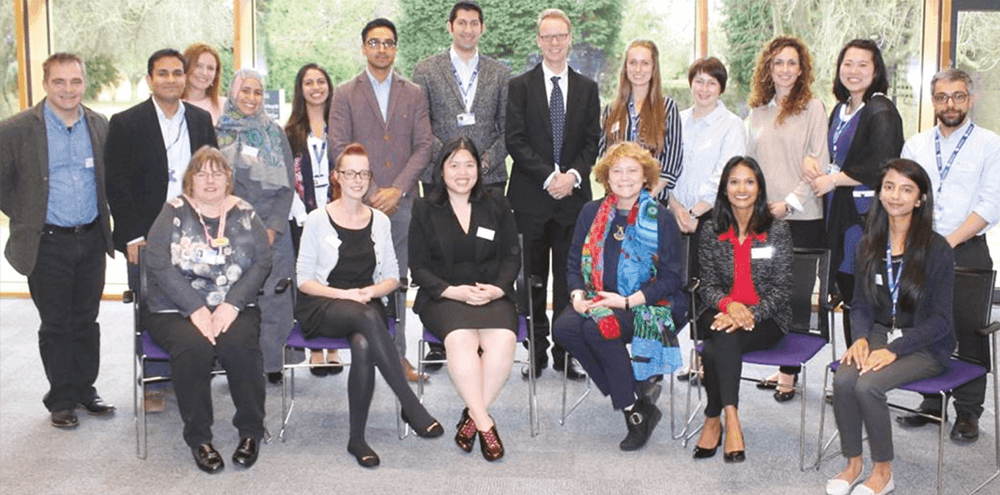 The University of Leicester, UK, ophthalmology research group in 2018
The University of Leicester, UK, ophthalmology research group in 2018
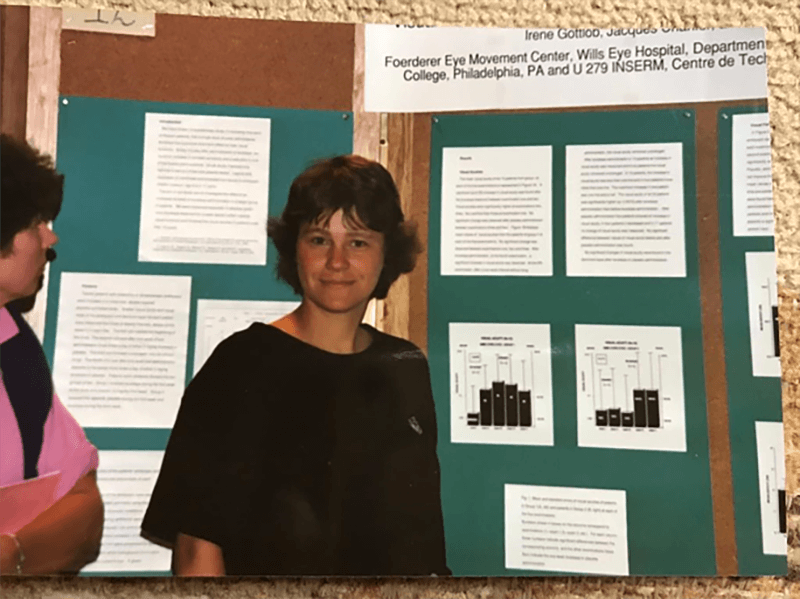 Irene presenting her poster at the 1991 ARVO meeting
Irene presenting her poster at the 1991 ARVO meeting
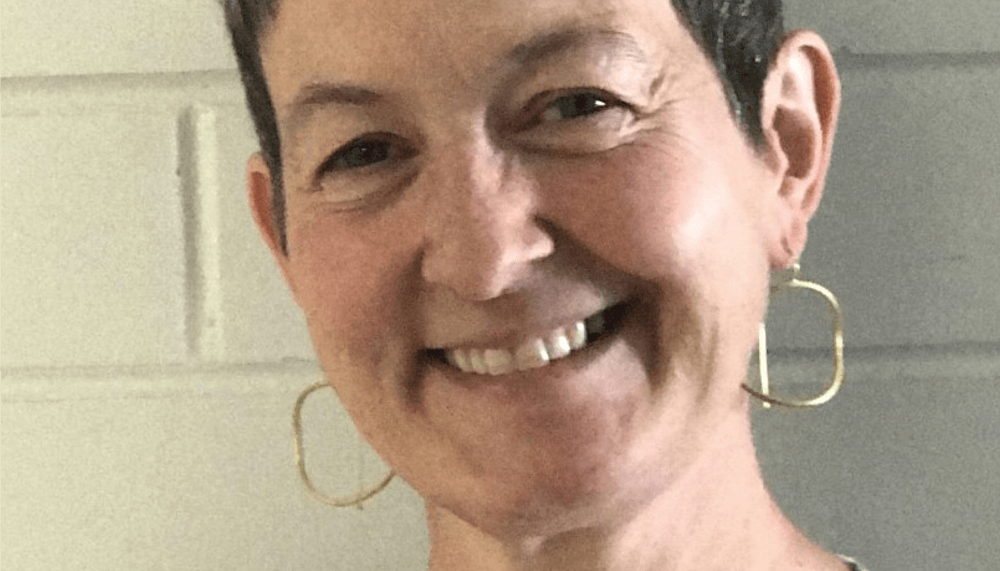
Justine Smith
I am the ARVO Executive Vice-President (EVP), and Matthew Flinders Distinguished Professor at Flinders University in Adelaide, Australia. EVP is elected by the ARVO membership. The key responsibilities include being the Chair of the Annual Meeting Programming Committee and oversight of scientific aspects of the meeting (as well as other ARVO meetings, such as ARVO-Asia); and ARVO Board Liaison to ARVO Executive Director and staff.
Leadership advice, challenges, and changing directions
One of the leadership challenges is actually geographical – I am based outside the US, in Australia, and I am the first ARVO EVP who is not living in the US. You could not have been in this position and not lived in the US 20 years ago. However, with so many options for global connectivity – for meetings as well as logistical matters – this has worked well, and it has been a good experience for the organization.
The direction of ARVO has continued to evolve with membership needs. ARVO holds a formal strategic planning process approximately every five years to ensure the direction is on the right course for the membership. ARVO leadership constantly turns over, as per our bylaws. The EVP serves a five-year term – the Presidents and Vice-Presidents serve a one-year term (and the President spends a year in the position of President-Elect and another year in the position of past President).
Important advice for anyone leading such a large research-oriented organization is to keep the communication channels open. ARVO uses the electronic community, ARVOConnect, as a key mechanism for allowing all members to communicate with each other, and with the ARVO Board.
Pandemic diaries
Due to the pandemic, like for other organizations, activities have moved into the virtual environment – ARVO 2021 was a fully virtual meeting. ARVO 2022 will include an in-person component, held in Denver, along with virtual components that should appeal to all and hopefully increase attendance (even if not numbers in the building).
COVID-19 has also caused a shift in my working landscape. As an ophthalmologist, I used telehealth to manage some patient visits. My specialty is uveitis or inflammatory eye disease. The American Academy of Ophthalmology ran a series of articles about working in different subspecialties during the pandemic – I wrote the piece on managing uveitis, along with co-author Timothy Lai, who is based at Chinese University of Hong Kong.
Although the pandemic hasn’t been a good experience for anyone, there are some aspects which we should take with us as we move back to a semblance of normality. The eye and vision community has learned how to capitalize on electronic communication, which will ultimately open our doors to more people than ever before. If we are to ever have another pandemic, the world has now learned pandemic strategy, which hopefully will be applied and make any future pandemics, as well as for the present.
ARVO in your career and collaborations
ARVO has provided the main route to establish my collaborations. The Annual Meeting, other ARVO events, and the journals have been and continue to be my major sources of information in the eye and vision sphere. It has also been where I’ve progressed my leadership skills, as I have learned leadership on the job at ARVO.
I would advise anyone who is thinking of joining to get on the website and see all that ARVO has to offer – there is a lot! And if I had to offer advice to someone early in their career, or even back to myself as I was starting, it’s not to expect your career to follow a straight path: some of the most exciting opportunities come during the detours.
The proudest moment of my career so far is leading ARVO as its President between 2013 and 2014. In terms of challenges or obstacles – it’s been smooth sailing for me. There really have not been obstacles in my way, which I think is a real testament to ARVO. The leadership is shared, and the organization and its Officers are extremely well supported by an exceptional staff.
Little known facts
It’s important to have role models and inspiration. For me, this is my mother: one of a small number of women to train as a medical doctor in New Zealand in the 1960s. She specialized in pathology, and even today she volunteers at the university in various capacities.
Something that people might not know about me is that I drink a lot of macchiatos!
People illustrations credit: Shutterstock.com
